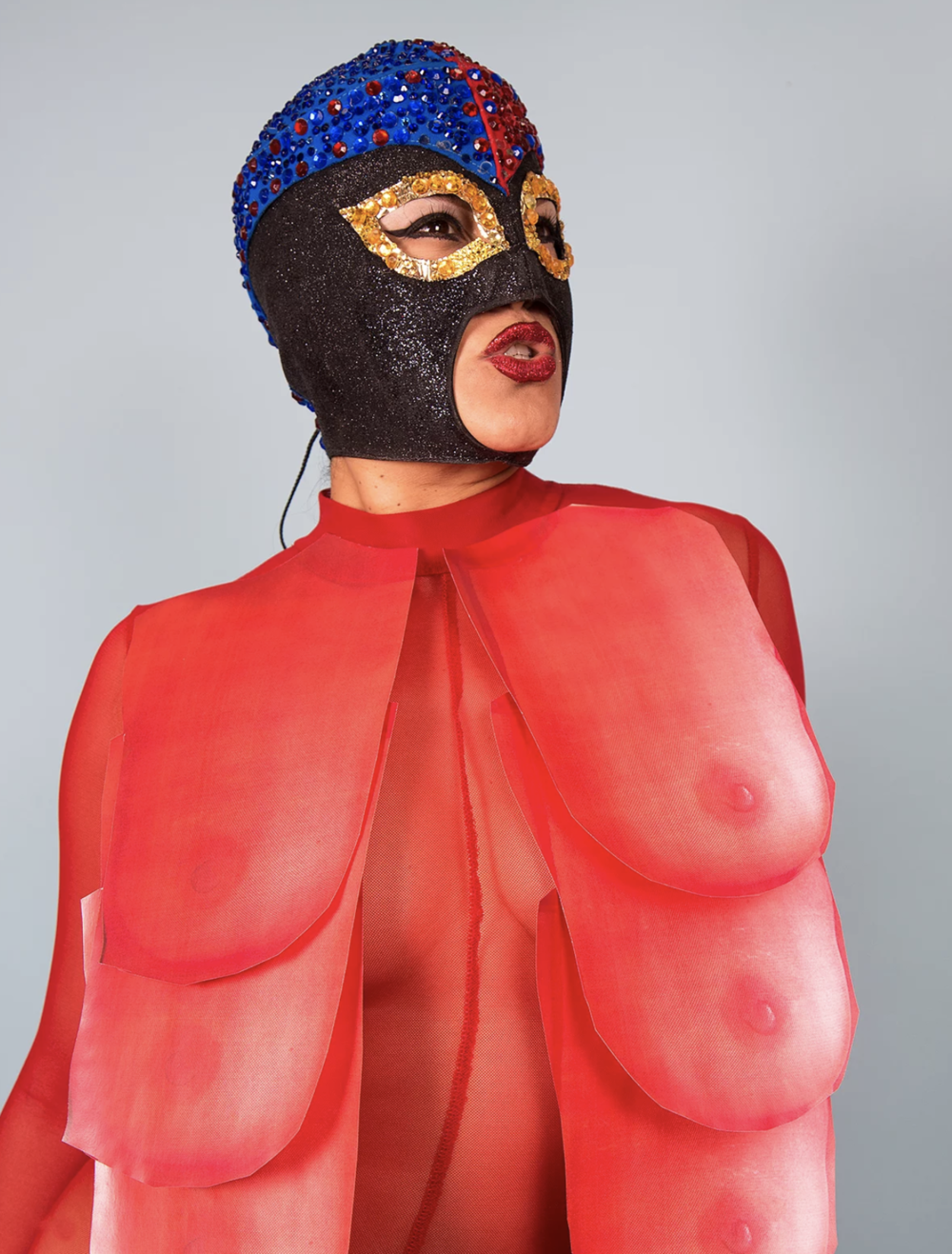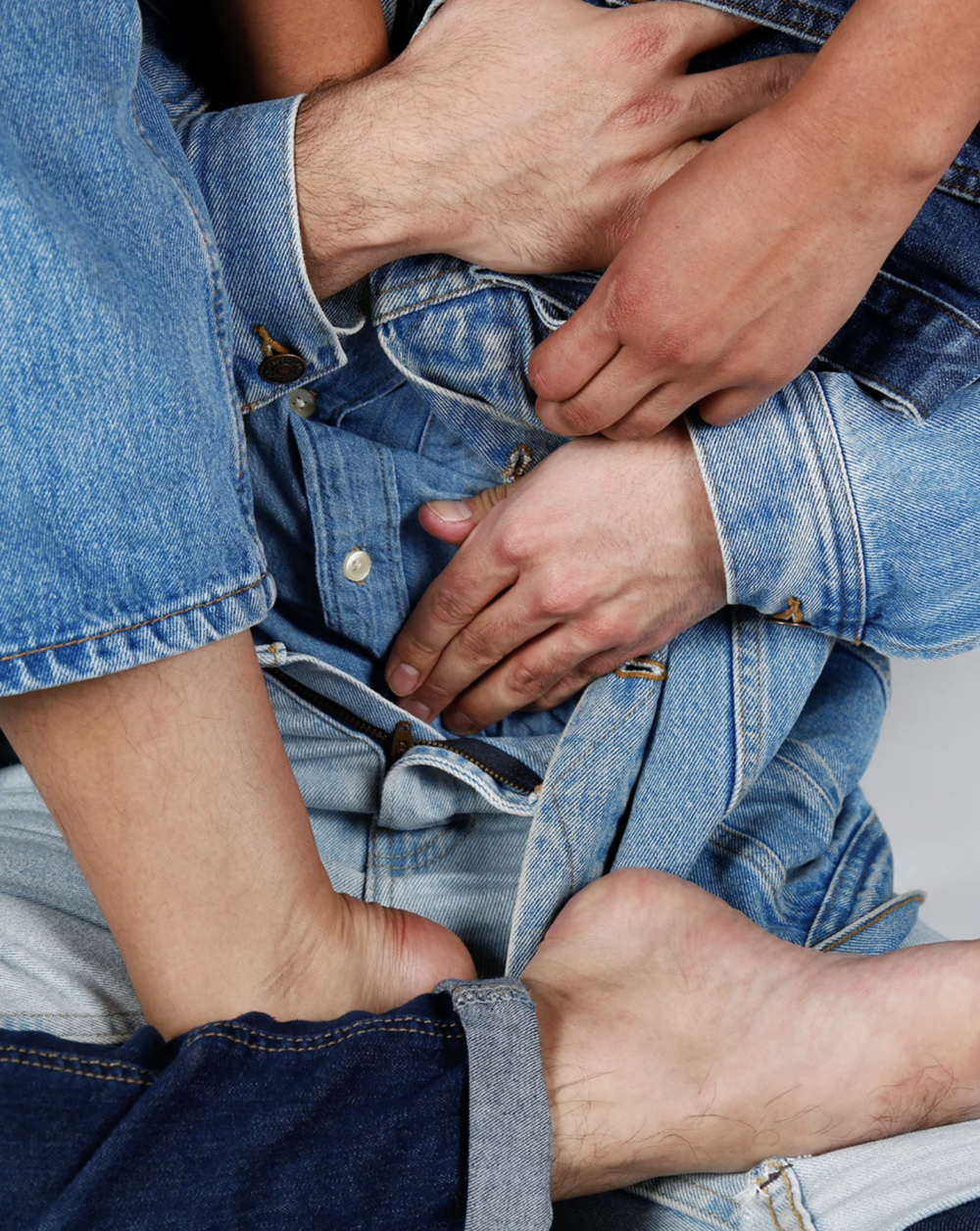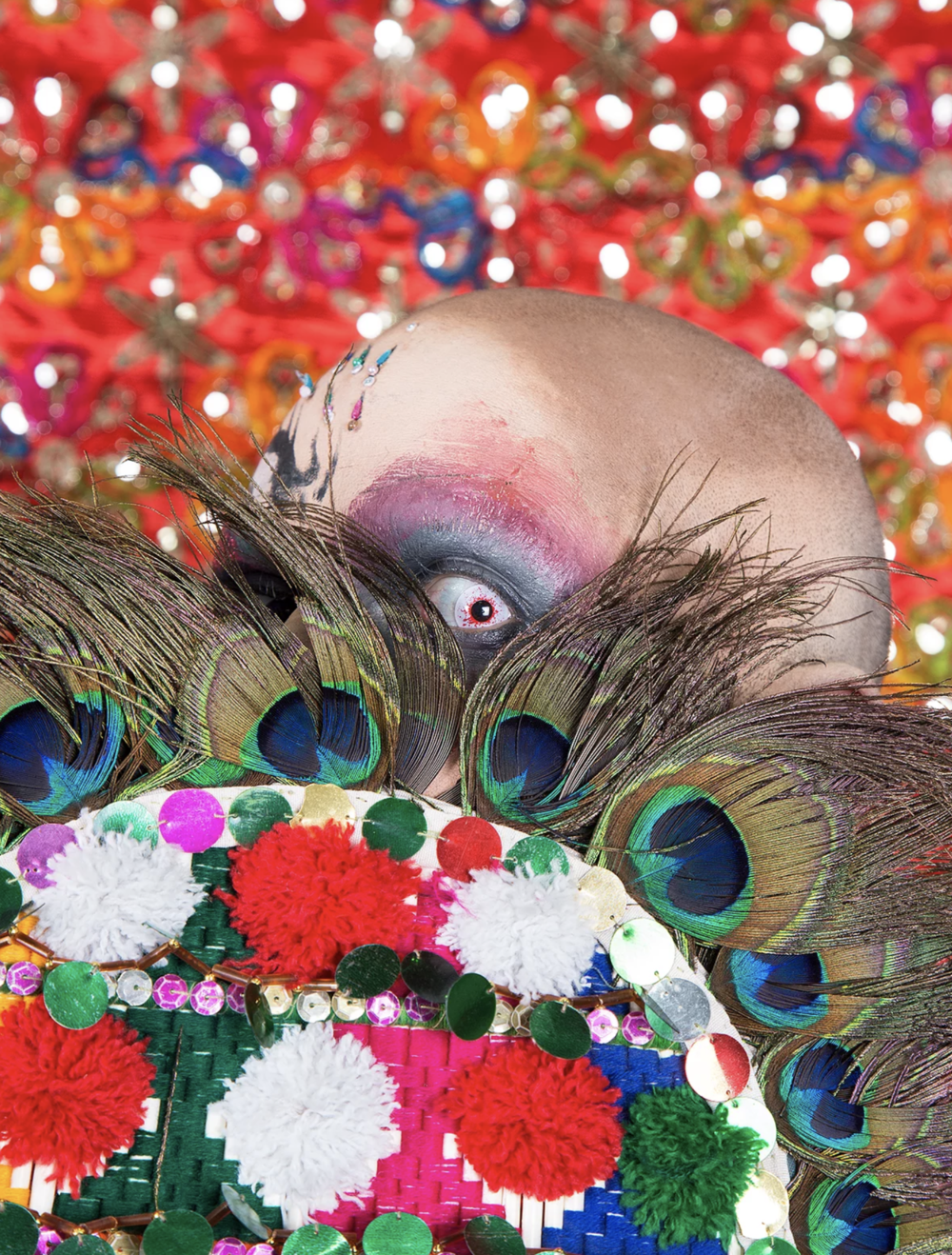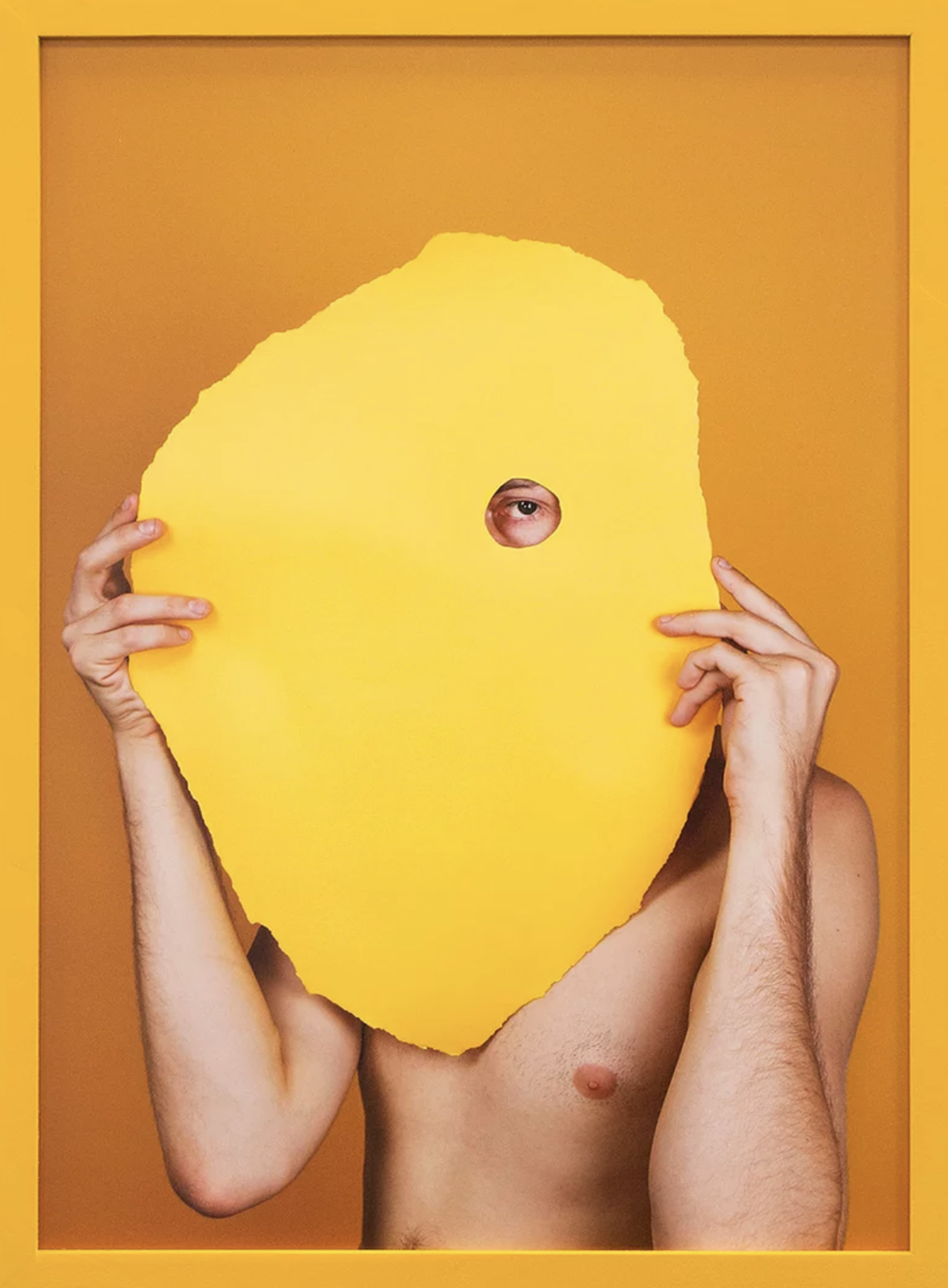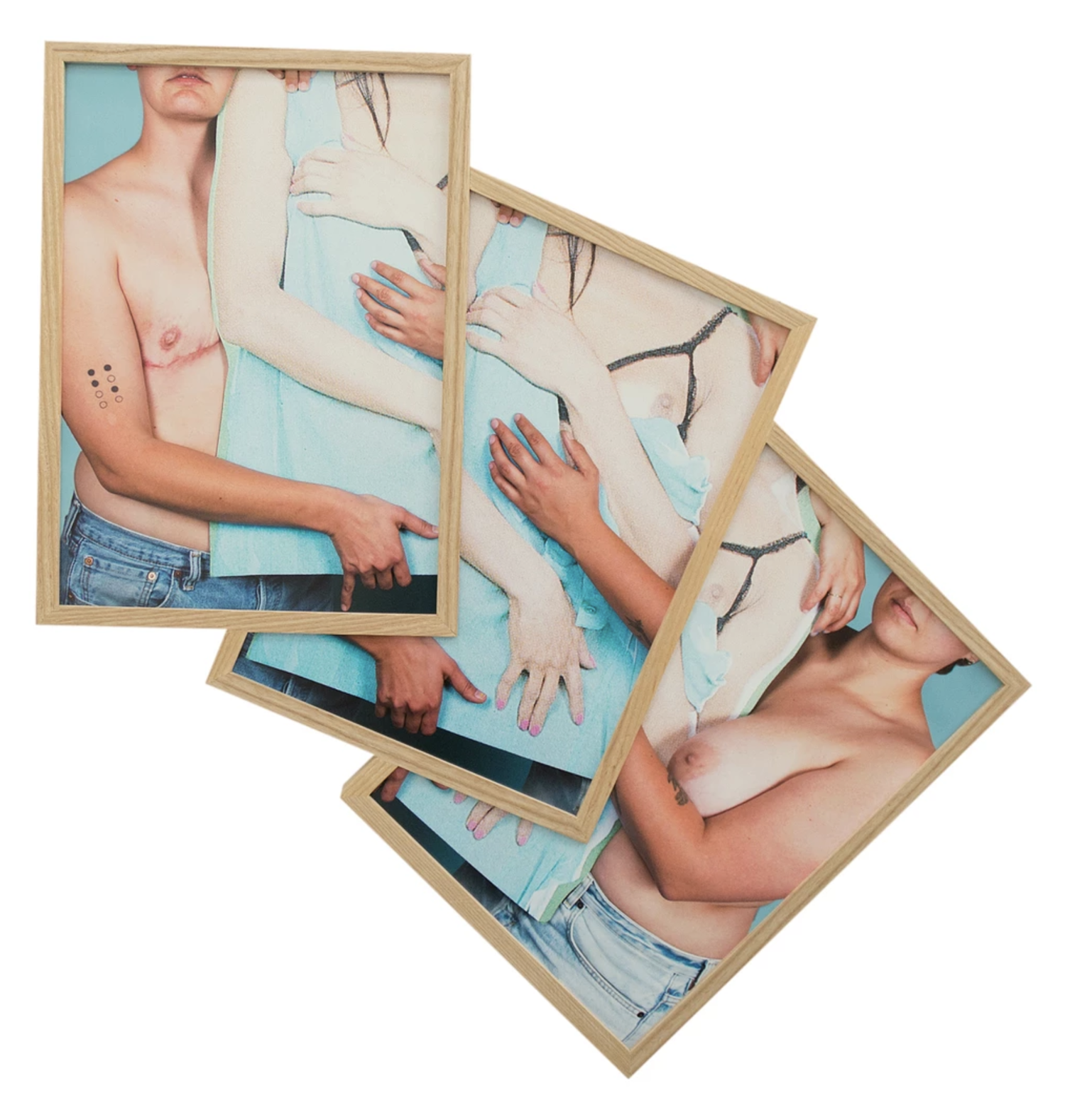Q&A: Marcela Pardo Ariza
By Jamil Hellu | September 12, 2019
Marcela Pardo Ariza explores the relationship of wry humor, queerness and representation through color sets and prop-like objects. Her photographs incorporate quotidian objects in seemingly absurd ways creating tableaux that mix recognizable elements with magical realism. Ariza is interested in the action of looking within the theatricality of “the set” and her visually provoking portraits seek to explore metaphors regarding race and gender.
Marcela Pardo Ariza (b. 1991 Bogotá, Colombia) lives and works in San Francisco, CA. Ariza is the recipient of the Tosa Studio Award 2017, a Murphy & Cadogan Contemporary Art Award and a finalist for the 2017 San Francisco Artist Award. She received her BA from Earlham College, Richmond, IN in 2013 and an MFA from San Francisco Art Institute (SFAI) in 2016. Her work has been recently exhibited at CULT exhibitions (San Francisco, CA), Slide Space (Oakland, CA), R/SF Projects (San Francisco), Minnesota Street Project (San Francisco, CA); De:Formal Gallery (New York, NY); Alter Space (San Francisco, CA); Guerrero Gallery (San Francisco, CA) and ProArts (Oakland, CA). Ariza works in the Civic Engagement department at Yerba Buena Center for the Arts and is a current member of the Curatorial Council at Southern Exposure.
Jamil Hellu is a visual artist based in San Francisco, working primarily with photography and video installation. His projects revolve around representations of identity, particularly engaged in exploring interpretations of queer sexuality.
Hellu spoke with Ariza this week for Strange Fire: “I first met Marcela Pardo Ariza in 2017, during the opening of her solo exhibition Slow Clap at R/SF Projects in San Francisco. Originally from Bogotá, Colombia, Marcela has increasingly become an important artistic voice in the Bay Area arts scene. Working with colorful photographic installations, set designs, and murals, her projects are visually provocative, revealing insightful approaches to expand representations of queerness, race, and gender. I interviewed Marcela on a summer afternoon in a coffee shop nearby her studio at Minnesota Street Project in San Francisco.”
Jamil Hellu: Marcela, one important consideration about your practice is to reflect on how it started. I am interested in learning about what brought you not only to photography specifically but to art-making in general. Some people have a very clear understanding of when and how it all started, or a corner that was turned along the way. How this process manifested for you?
Marcela Pardo Ariza: It happened through my parents. Both of my parents were doing a lot of theater when I was growing up in Bogotá in the 90s ―a time in which Bogotá was very violent. For me there was an indispensable combination of playfulness in moments of despair. Both of my parents are extremely playful. They really celebrate the poetics of life and the present in which we live, with a keen awareness that life can be taken away at any moment. I was always drawn to art-making as something that can give us hope even when the odds are against us. My parents also listened to a lot of classical music and I started doing music when I was very young.
JH: Were you into classical music as well?
MA: Yes. I went to music school since I was six. There was this whole idea that classical music was somewhat superior and that, by reading a score, you are reinterpreting what someone else had already done. We were looking up to systems that had been deemed as genius. But bodies never really quite match what we think of that ideal. Even though I enjoyed playing classical music, I felt trapped by old fashioned orchestra rules where women had to wear skirts and men had to wear pants. I thought it was so uptight. I kept thinking when I was young: "Oh, I don't fit here." I felt like such a freak. Now I’m a happy and proud freak!
JH: What kind of musical instrument did you play?
MA: I played the violin. At first, it was all classical. But there was also a class about Colombian folklore music. I remember being so into it, as the rules were different. I learned about Colombian music and then about jazz, and it kind of blew my mind because it was so different. You didn't have to read the score. Instead, you had to internalize systems and feelings to be able to dig them out sporadically. I thought that was so much richer than reading a score. I think about those paradigms to this day. Even in photography, people are always telling you what the “right way of doing something is,” while what's more interesting is when those things don't really happen in a scripted way.
JH: When did you start working in photography?
MA: I took a photography class in college. One of the first assignments was about responding to photographers that we looked up to. And I chose Duane Michals.
JH: Yes!! Duane!
MA: Now looking back, I am like “of course Duane Michals!” He was so queer! One of the first shoots that I did was photo sequence of former lovers reconnecting. So I asked a friend if he felt comfortable reaching out to his ex-boyfriend to do a photoshoot to see how their bodies would react after not being together—which, to this day, I think I was asking for too much, but it worked out. I photographed them from the top of a ladder, looking down. We did a photo sequence where they were undressing and reconnecting. What was so striking to me in that moment was this permission that photography gave me to enter the realm of intimacy of someone else.
JH: One of my questions for you has to do with this subject of intimacy, as you tend to emphasize notions of intimacy often in your images. Can you describe what this represents to you and why do you think it's important?
MA: For me, witnessing other people being intimate feels like a gift. Intimacy is something that we all need. It's a need to feel genuinely connected. There's this mutual understanding that people are holding each other's vulnerability very tenderly. And it can be so relatable, too. I think that by practicing those gestures of care is when interpersonal relationships get shaped. When I photograph my models or friends, we're connecting more as human beings. To me, that is so powerful. It's also a different way of spending our social time. We could go to a bar together and have a conversation, but we could also be in the studio photographing while investigating ways of being intimate and different ways of representing our intimacy.
Grace III, 2018
JH: You also tend to crop into these moments of intimacy in your photographs.
MA: I often fragment these moments. I like anonymity, when somebody else sees a photograph of a very intimate moment and doesn’t get access to everything right away. People are invited to bring in their own experiences into their viewing experience. I enjoy changing the gaze from “looking into” to “looking with”.
JH: Within this topic, do you think you are as interested in making portraits of people as much you are interested in creating representations about gestures that people make?
MA: This is a really interesting conversation. If you think about portraiture in painting for example, there are two examples that I always think about: the depictions of royalty that are often face-frontal and demonstrate their wealth. Then, there's the other side of portraiture that feels very anthropological in depicting others. We have this idea that when you shoot someone straight-forward, head to toe, one gets to know the other person more. To me this feel like a type of forced unveiling, in which we need to see you all, so we can see and calculate what type of person you are. That type of gaze feels so colonial. Why do I need to show you everything that I am? It feels a little limited and formulaic. Gestures are much more interesting to me. I like to think that portraiture doesn't always have to be face-frontal. For instance, because I know you as Jamil Hellu, I can look at the back of your head and recognize you right away. I gravitate towards details of people and their gestures. To me, you see much more nuanced information than having a full-on portrait.
JH: For one of your last bodies of work, which was included in the Yerba Buena Center for the Arts' triennial "Bay Area Now 8" in San Francisco, you invited many queer people that you knew to be in the photographs. This work is also included in the exhibition “Touching History” at the Palm Springs Art Museum, commemorating the 50th anniversary of New York’s Stonewall riots. Please talk about your ideas for this project.
MA: Since the title of the exhibition was “Bay Area Now,” I started thinking about what space I occupy currently in the Bay Area community and also what has occurred to this community previously. I began going through local archives, particularly at the San Francisco Public Library and the GLBT Historical Society. First of all, I was so blown away by the amount of material that exists on queer history, especially considering that these types of archives in Colombia are probably very different. What was beautiful during this process was looking at images in these archives and feeling tenderness towards those people who used to walk the streets that now I walk in. These queers from the past felt like heroes, who paved the streets -literally and metaphorically- before us. I also felt a type of sadness about these bodies existing now in conservation boxes in a basement. I kept thinking: “how do you invite those bodies back into a conversation that's happening today?” I borrowed some of the images from the archive that had people in them. I re-photographed and re-printed them life size. Then, I invited queer people from our present time to be photographed with these cutouts of bodies from the past. So in a way it defied this idea that photography happens in one moment in time only. Also, I thought about a kinship to those people who fought for us to exist here today, like a trans-historical kinship that is intergenerational beyond the people who are still with us today. The project depicts queer bodies from the past and queers from the present existing simultaneously.
Randy Andy, Dollface, Tania, Lu, Louis, et al.
(1983~, 1975~, 1992~, 2018)
JH: What kinds of questions do you think you are asking in your work?
MA: That's such a good question. I think I'm trying to reevaluate the materiality of photography and the discourse around it. I remember learning so many rules in photography and feeling so contrived. I just want people to play more and realize that those rules were made by somebody else in different times and with a different agenda. They weren't written in stone. We can make our own. Overall, I want people to play more and to care for others more intentionally.
JH: It seems that ideas of theatricality in work have been present from the very beginning. How do you see this evolving for you and impacting your work?
MA: Well, I think of theatricality in many different ways. One of them is in the space that I'm shooting in. I am not a snapshot-kind-of person. I enjoy staging things that didn’t exist already. I think about a set; I think about a situation and I invite people to enact it. It’s very powerful to have a physical space where you have the permission to re-enact the reality we want to see. It is pretty much a space of privilege, in which there is a lot of possibility in what means to be theatrical. There is a special movement that happens when you invite three people to share a space and everyone brings their own sense of theatricality together to create something that wouldn’t otherwise be possible. I like the fact we all irreplaceable regarding how each subject is depicted in the work.
JH: How has studying at the San Francisco Art Institute shaped your evolution as an artist?
MA: I think in multiple ways. I was in Brooklyn before I decided to come to San Francisco. There was such a legacy of photography in the West Coast and there was such a queer legacy as well. I was looking for those two things to coexist together. At SFAI, I understood the interconnectivity of generations. It's a school that has been around for a very long time, challenging people to think outside the box. It is still a fine arts institution despite all the financial challenges that entails nowadays. Living in the Bay Area, I realized that people who have graduated from this same school years ago were still living in this city, maybe doing gallery stuff or working for various nonprofits in the arts. I quickly started figuring out this kind of mind-map of how everyone was interconnected and I felt so excited by that. I wasn’t just one artist getting an MFA. We don’t exist in isolation, and I really love that. The school made me realize the importance of how everything is connected and how everyone was influencing each other over generations as well. Aren't we both an example of that, since you also studied at SFAI?
JH: Yes, indeed! And I was also influenced by Duane Michals and by a generation of queer photographers before him. As you are someone who represents a new generation of photographers, what is for you the future of photographic practice?
MA: The more that time passes, I think of photography as one of the genres that has been developing so quickly. I'm all for developing to whichever direction we want to develop it. Yet, with social media, our ability to spend time with an image is so low. We experience images so fast and I'm interested in the physicality of the work. How do we ask people to look closer when we're looking at so many things all the time? I also feel that we are in a moment in which genres shouldn’t really exist, as nothing is a clean slate anymore. For instance, I like building things in wood; I like doing things with vinyl and wallpaper; I like painting murals; I don’t see photography as this thing that remains “pure.” A lot of photography galleries still defined that so clearly. Some people enter that world, maintaining the status of photography in that specific way, which limits their willingness to experiment. Some people don’t enter that world because they have challenged the limits of photography from the beginning. I just want people to play more with it, because there's so much potential for it. The elasticity of the image is endless, you know?!
JH: The elasticity of the image! [I say excitingly]. We’ll finish with that. Thank you very much, Marcela.
All images © Marcela Pardo Ariza


